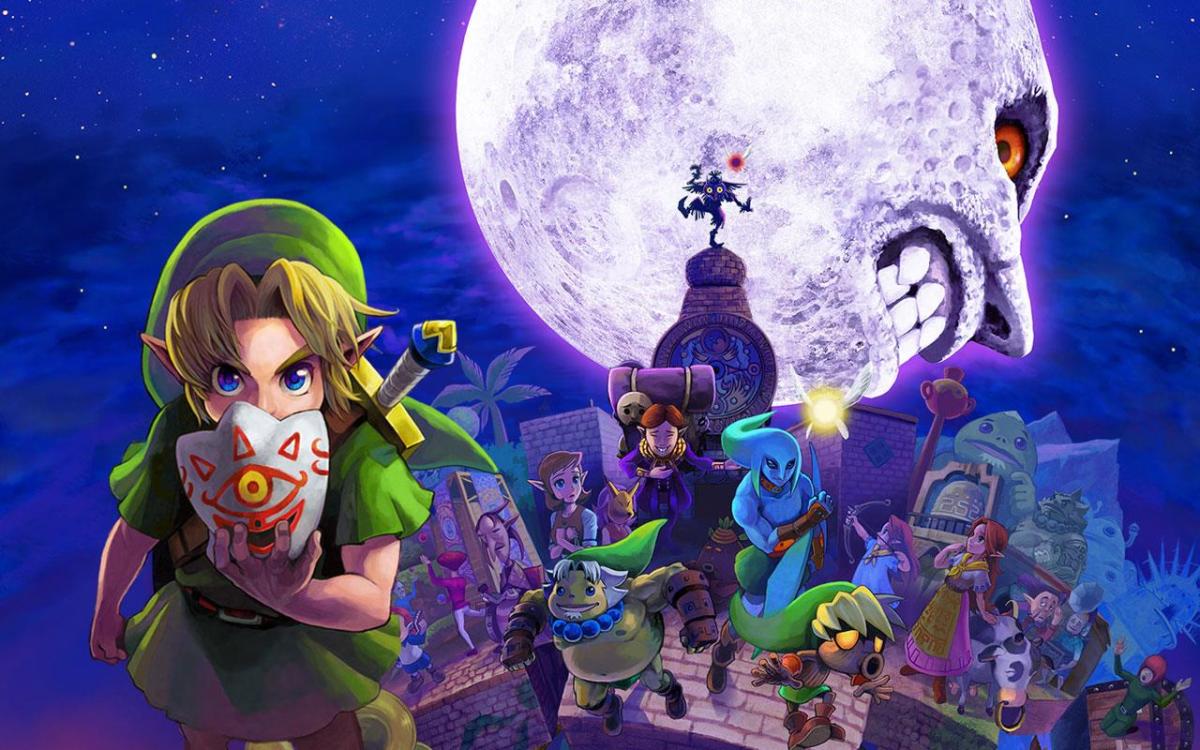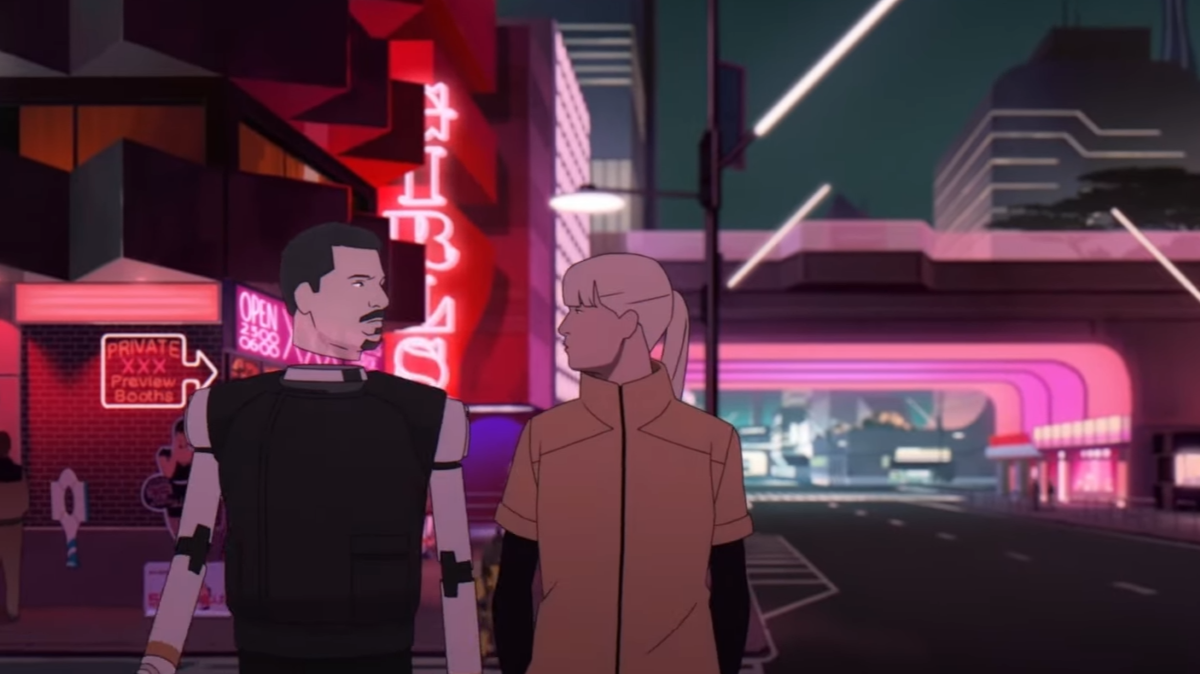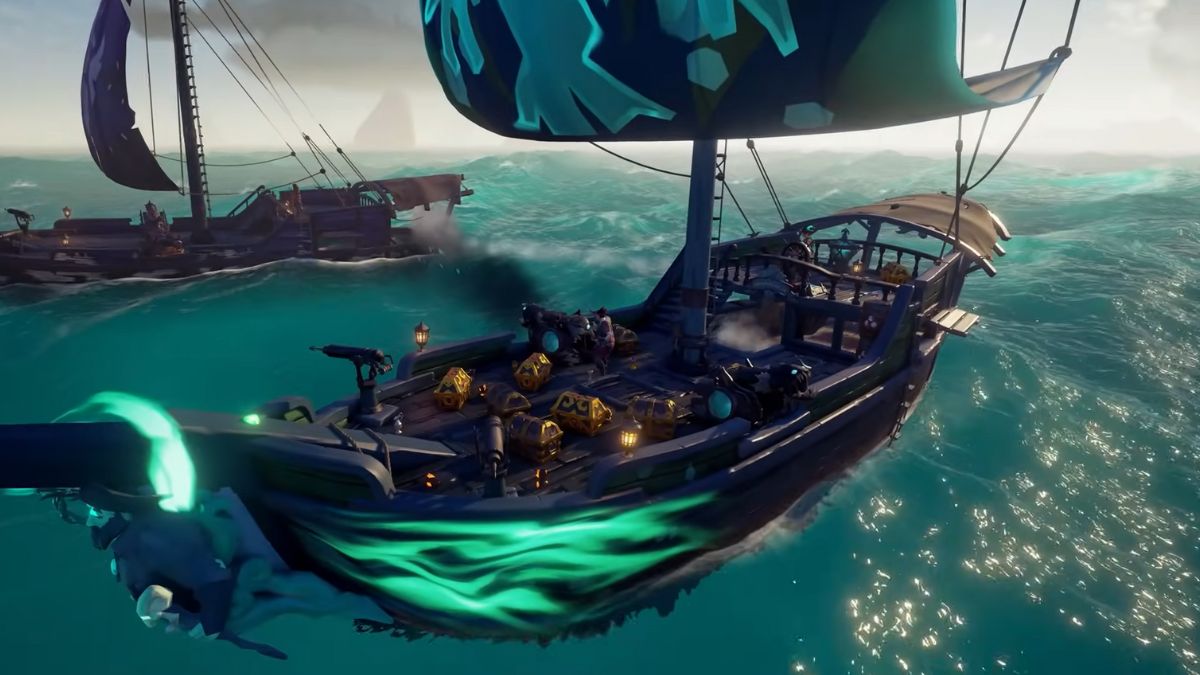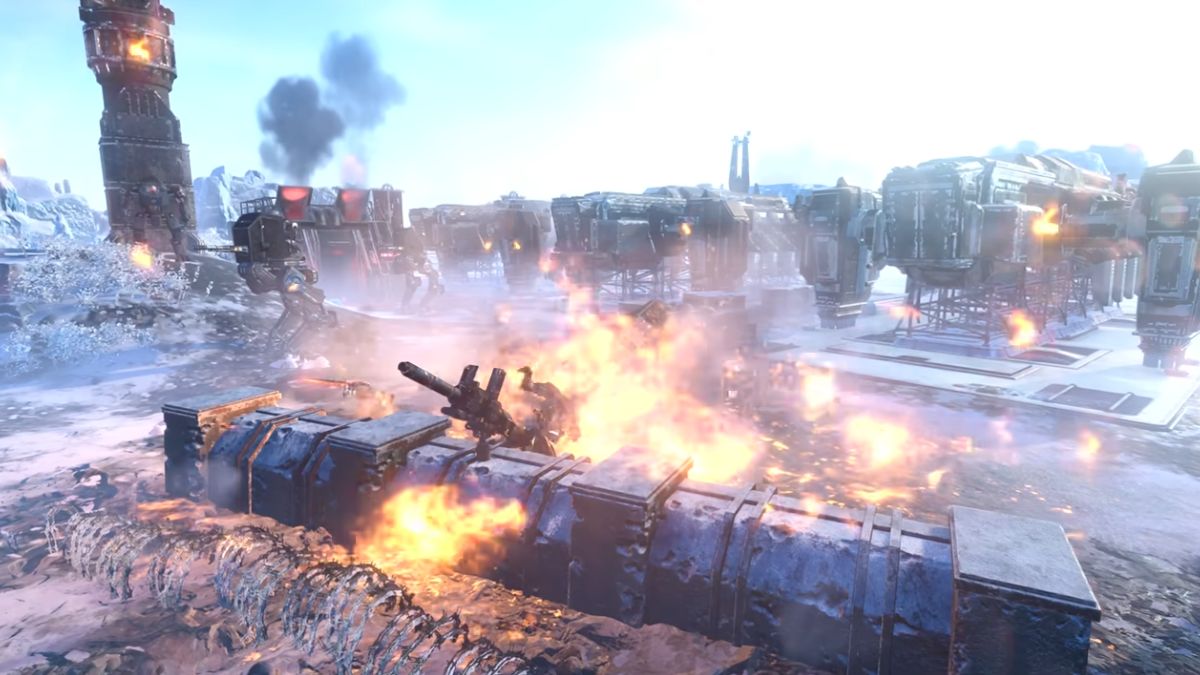Promoted from our Community Blogs
[The land of Termina from Majora’s Mask is an incredible piece of work. Like the namesake town at the center of the land, the world of Termina runs like a clock, with or without your intervention. LinkSlayer64 truly illuminates that special piece of game design that makes Termina such a compelling world to explore. ~Strider]
Majora’s Mask is probably my favorite 3D Zelda (the honor of favorite 2D Zelda goes to Oracle of Ages.) Saying it is my favorite doesn’t mean a whole lot though in the general “playing the game” sense, as I probably replayed Ocarina of Time just as many times as I replayed MM, and I replayed it at least enough times to always get the Biggoron Sword before entering the Forest Temple. I still find Majora’s Mask to be the better game in some ways. It’s hard to say exactly why. I think the repetition of it is very enjoyable, and the ability to replay bosses was a huge plus to me because I loved fighting the big baddies whenever I got bored. However, as I’ve gotten older, I’m come to appreciate more of its finer details, and there is one in particular I want to focus on – its world building. But first, a little history:
Time is Money
The failure of the Nintendo 64 Disc Drive would mean the temporary death of Ura Zelda, a planned set of remixed dungeons and other changed elements for Ocarina of Time. Although by that time, one worker, Eiji Aonuma had already branched off of Ura Zelda development to work on Zelda: Gaiden, a project that was to be completed in one year at the behest of Miyamoto.
This project would ultimately be known as The Legend of Zelda: Majora’s Mask. The concept of time usage likely evolved from Ocarina of Time‘s passage of time, and discussions of the real-time internal clock provided by the Disc Drive add-on (a feature also planned to be used by Animal Forest). Early renditions of this concept included lasting for a week, and at one point was considered to be bought as a commodity, quoting an interview with Miyamoto:
“They say ‘Time is money,'” elaborates Miyamoto. “You will be able to buy time using [sic] Rupies. There will be a merchant who sells time.”

Beta MM image from JayTheHam
Built using the assets and engine of Ocarina of Time, Majora’s Mask would be completed without the need for a delay, with the exception of the international releases coming six months later than the Japanese release, which would serve to enhance the game by limiting the save files to two, but enabling quick saves at owl statues as opposed to the Japanese cartridge, where saving always required playing the Song of Time.
A Terrible Fate
Majora’s Mask is known for being one of the darker Zelda games in terms of tone and content. It has been the subject of multiple theories, from the alleged upside down Triforces in The Stone Tower, to the belief that Link is in fact dead. (Side note, first time I wrote this, it came out as “Link is dad”; whose, I don’t know, but there you have it.) Regardless of what you believe, the content being dark remains the same, and the three-day time limit only further serves to strike panic into your heart. This has solidified it as a unique entry in an otherwise very high-spirited series.
For those unfamiliar with the basic premise, allow me to explain:
- Link encounters the Skull Kid, who has stolen a mask of great evil power; Majora’s Mask.
- Link is forced into Termina, a parallel dimension to Hyrule, has his Ocarina and horse Epona stolen, and is turned into a Deku Scrub.
- The Moon is set to fall in three days; at the beginning of the Clock Tower celebration.
- The four areas around Clock Town have been cursed in various ways by the Skull Kid.
Sounds quite grim, no? It also features denial, fear, familial issues, loss of a child, loss of self, kid(?)napping, alien abduction, permanent death of NPCs, a main theme that is both melancholic and unsettling at the same time, hammerspace pipe organs, horrifying transformation sequences, and a fail state so terrifying (with a message so chillingly tone-deaf in the 3DS remake), it still sends chills down my spine to watch.
So by now, many of the veterans of this game are probably telling me to “get on with it” – no problem! The story of Majora’s Mask takes place over three days, and as such, everything happens predictably at the same times unless you somehow intervene to change the outcome. Completing all the side quests of the game requires due diligence on your part to keep track of the time things occur (a task made easier by the 3D remake). The game also only features four dungeons, so it really relies on its other content to beef it up. This is where what I love comes in.
In order to make a unique and interesting world, you will get a plethora of reactions from all the NPCs at different times of the day. They’ll do different things and the fact is that the world really does not seem to revolve around you in any way, shape, or form. You are merely poking and prodding at it to change it ever so slightly and accomplish your goals. It’s a unique change for Zelda, a game where the advancement of the world really seems to revolve around you most of the time.
The decoupling of the world from being ever-tied to your actions as a hero really creates a more believable world that you can sit back and observe. Of course characters will still react to the changes brought by what you do, but the world is always in constant motion even if you chose to just sit around and collect rupees from the field for three days. Characters like the Postman follow exact schedules with little regard for what you do unless it has a direct effect on them.

Because this game puts a lot of its lifeblood into the side quests, the characters are fleshed out and have so many reactions to different things (many of them react to masks with different dialogue). It gives it that extra oomph that I don’t ever feel except for another game with similarly fleshed-out characters: Psychonauts (seriously, use clairvoyance on EVERYONE and EVERYTHING when you can, it is one of the best little details I’ve ever seen in a game). Repeating the same three days over and over allows you to create an internal bond with these characters, much like Bill Murray in Groundhog Day. Especially when you come to realize just how screwed they all are…
It pains my heart to see children still playing in the streets because they have no idea what’s going on…
Remember what I said about this game being dark?
It
Only
Gets
Worse.
The other part of this game that gives it so much character is its tragic setting. Like a giant ear, Link will have information disseminated to him by anyone he chooses to speak to. Talking to a character over the course of all three days and following them (kids; don’t stalk people!) can reveal a lot on how they are dealing with the impending doom hanging above them in the sky.
The most interesting part is how varied and complex everyone’s reactions are. A good majority of the population is in pure denial that the situation is even happening. The Postman likely suffers from some form of obsessive compulsive disorder wherein he feels his life must be tied to his delivery schedule, going so far as to try to convince himself to flee by sending himself a letter. The mother of Kafei, devastated by the disappearance of her son, can be found hanging out in the bar on the last night.
The Anju and Kafei side quest is one of the most involved ones, that will push you to the very last seconds to witness their reuniting embrace and exchange of vows moments before the moon will fall. The head carpenter, one of my favorites, stubbornly holds onto tradition, watching the clock tower open, cursing the heavens. “If you’re gonna fall, then fall already!” There are many, many more tragic lines I could quote, but I don’t want to bog you all down with them.

Link also assumes the form of three species during this game: Deku, Goron, and Zora. Each of these are acquired through the death of one of these creatures. The Deku Butler will comment that you remind him of his son, who was cursed to become a tree so that Link could be cursed to assume the form of a Deku by Skull Kid, a situation that leads to one of the most saddening scenes in the game. The Goron mask is acquired from the restless spirit of Darmani, and the Goron tribe will comment on your return from death, that you are there to save them. Lastly, your Zora transformation is acquired from the dying Mikau. No one knows of his death, and it seems all the Zoras believe you are simply him, including his girlfriend Lulu. Quite a tragic facade is played out by Link to accomplish his goals. None of these characters live once Link stops the moon, I might add.
100 steps north, 100 steps south, 100 steps east, 100 steps west.
So far, Majora’s Mask and its remakes are the only games in the series that take place in the land of Termina, and what a unique land it is. Besides sharing species (and character models), little else carries over from the land of Hyrule. The Triforce is never mentioned, nor are the goddesses. The mythos of the Hero of Time is nonexistent, as well as anything one might consider a “sage.”
Termina is its own uniquely crafted land with its own personality, quite distant from the mysticism and magic of Hyrule (the only myth widely believed in is that of The Four Giants), with a focus instead on technology. Terminans seem to have mastered advanced mechanical structures such as the giant clock tower, and many smaller (albeit large) clocks. They have motorboats, lotteries, and even cameras, as well as bobble-heads seeming to be a popular item among residents. The Indie-GoGo’s are the premier Zoran rock band, the Gorons participate in races, and Dekus have mastered some form of flight. The species seem much more fleshed out as a result.
There is even difference in how each species governs their people. Clock Town is a democracy, run by a mayor. Gorons participate in a patriarchy ruled by a Goron elder, a role passed onto one deemed fit. The Dekus are a monarchy featuring a Deku King and a Deku Princess. The Gerudos are actually a group of pirates, presumably led by a captain. The only question we are left with is how the Zoras operate. Perhaps they’re like a colony of hippy nudists or something, because as far as I can tell, this fishy musician is not wearing any pants.

There is one place that seems to house no government, the dead-infested land of Ikana Canyon, filled with lost and restless souls, seeking vengeance, unable to sleep, forever carrying out their orders.
Stained with a history of darkness, drenched in blood…
Ikana Canyon is one of the greatest mysteries of Termina, housing the abandoned Ikana Kingdom. This particular land is noted as being war-torn, and now houses ReDeads, Stalchildren, and the restless ninja spirits Garos. It is home to the mysterious Mirror Shield, found at the bottom of a Gibdo-infested well. A mysterious tune can be played with a giant music box to calm the souls of the dead, and send them back underground. Ikana Canyon is just all-around weird.

Further into the depths of Ikana will lead you to the puzzling Stone Tower. Stone Tower is a mysterious stronghold with mystical properties with even more baffling symbolism found in the sculptures that adorn it. It has been the subject of many a mystery as to its creation and what purpose it served. Leaving out pieces of a mystery gives players the chance to build upon the world with their own unique theories, to share with friends and fans. Ikana Canyon is a place where things just go, for the most part due to lack of living NPCs, unanswered. It just goes to show that sometimes building a world is as much leaving information out as it is putting information in; you have to be careful to craft an interesting world!
Whether a parting be forever or merely for a short time… That is up to you
Yes readers, we have come to the end. Perhaps now some of you can see why I adore Majora’s Mask in a way you had not considered before. There is so much that I have omitted that I am sure I would be kicking myself for, and a myriad of smaller details I have probably missed as well, but I know I can enjoy replaying to see them all over again. I have yet to find a game that truly strikes me in the same way this one has, but I am always holding out the hope that one will. I recently read about Gothic and heard good things about its world building, so I’m going to see if I can give that a try. Suffice to say, I don’t expect a game like Majora’s Mask to really ever come again, but hey, anything can happen!
And that’s the end of my blog, donk! – Thanks To Gamemaniac3434 for proofreading! (Go read some of his blogs!)
I hope you enjoyed reading! Have any questions or comments? Feel free to post them! I love comments… I… I shall consume… all comments…





